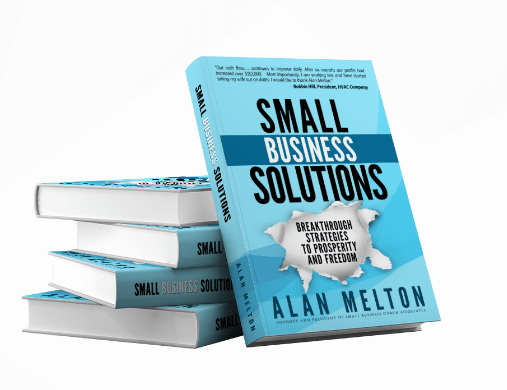VIEW BY TOPIC
- Finding Customers
- Business Systems
- Managing Employees
- Leadership
- Managing Money
Related Posts

Ready to Grow Your Business Fast?
Here’s How I Grew Five Businesses, and Eventually Sold One to a Fortune 500 Company.

How to Use Process Standardization so Your Firm is Prepared for Anything
Consider what would follow if every employee in your company abruptly forgets how to perform their duties. You should anticipate a slew of nasty feedback. It would put your firm in peril due to the loss of massive clientele. Your organization will quickly fall all over the place if everyone is doing their own thing without planning and collaboration. Process standardization can prove to be vital to the sucess of your company.
All your customer has to do now is find all the flaws in your process plan, and your company is doomed. Many enterprises and businesses fail because they assume and implement methods that are incompatible with the expectations of their customers.
Your company’s primary goal is to ensure that your customers are satisfied. Throughout the process, employees or staff must adhere to processes and routines that accomplish that specific purpose.
Process standardization, however, goes beyond that, as it enables the organization to improve its outcomes by optimizing profitability and decreasing unnecessary costs. Look at how standardization can help if your company is trapped in time and lacks signs.
What is Process Standardization?
Process standardization is the effort of bringing together a company’s operations to generate templates and protocols for the company’s various activities.
This technique’s major goal is to make sure that all activities and paperwork are managed in the same way, even if they are completed by different persons or departments. In this manner, any employee may comprehend what was accomplished, how it was accomplished, where it was accomplished, and when it was accomplished.
Formalizing and integrating operations is a technique that guarantees your firm’s high standards, without adaptability or variations, irrespective of the field or individual in charge of the activity, which is especially important when the company has subsidiaries.
How To Put Process Standardization in Action
Because people and organizational protocols must be prepared, process standardization is not a technique that can be implemented quickly. Recognize how this should be accomplished.
1. Create a Workflow Blueprint
Process mapping is a tool for describing and identifying a company’s complete workflow. This ensures that everyone engaged, including other sectors and top management, is aware of the actions required for each activity.
This should be the initial stage in implementing procedures and standards, as it allows you to identify bottlenecks and create new ways of working.
2. Integrate All Departments
Leaders must be explicit and honest in their responsibilities to engage and retain people in the organization and process standardization.
They will be able to develop reasonable, collaborative goals, find ways to link their employees, and participate in and act on staff accreditation as well as skill and ability enhancement.
3. Strategic Documentation
The compilation and analysis of all stages of a project, method, or task are known as process documentation. This should be done regularly to discover, rectify, and avoid problems, blockages, and inefficiencies in the company’s operations, as well as minimize costs and improve procedure quality.
4. Employee Training
Employees frequently experience obstacles and shortcomings in their abilities. Another example is a change in the company’s processes. Certification and remedial training can help in both instances.
5. Consistent Monitoring
Standardization of processes, like any other shift in organizational style or approach, must be carefully scrutinized. For this purpose, it is critical to identify indicators that can be used to make estimates and evaluations, allowing for the identification of flaws and the implementation of solutions.
After all, many procedures must be modified to match your company’s and department’s routines.
Advantages of Process Standardization

Business process standardization aids an organization’s transition to a single, unified system for completing activities wherever they arise. As a result, change can be implemented fast and easily, and it can be replicated at different levels of the organization when the need arises.
Below are the four leading advantages of standardizing corporate processes:
1. Enhanced Client Contentment
Business process standardization takes the best method of producing things or providing services and makes it the industry standard. As a result, customers can expect a certain level of product or service quality, which keeps them happy and coming back.
2. Compliance
Once a change is made to one technique of getting a certain task done wherever it appears, it is guaranteed that it will affect every portion of the organization where that activity appears.
As a result, the team can be confident that any guidelines or procedures adopted will be completely implemented throughout the firm, guaranteeing compliance with all relevant norms and standards.
3. Asset Productivity
Standardization of business processes aims for more than just a consistent method of doing activities. It’s also focused on doing these tasks with the fewest resources possible.
As a result, cost savings in one branch of an organization can be readily and swiftly copied, compounding the price reductions many times over.
4. Reliable Information Governance
Standardizing business processes allows a company to develop a single source of truth for completing tasks. As a result, notes and best practices established from one location where a procedure is used can be reused in multiple places without having to be created from scratch.
5. Optimized Versatility and Procedures
A complicated workflow is something you should avoid as you advance in business management. You’d become trapped at this stage and neglect to pay attention to several processes.
The secret to unleashing efficiency and productivity is minimalism. It does not have to be difficult to achieve good results. You’ll be well on your way to achieving greater results if you’ve established clear processes that your employees can grasp.
Conclusion on Process Standardization
Every forward-thinking corporation can use business process standardization to tame process chaos and get more done with a stable standard.
It reduces resource waste, boosts manufacturing assurance, and makes it simpler to scale up identical processes while maintaining quality.














